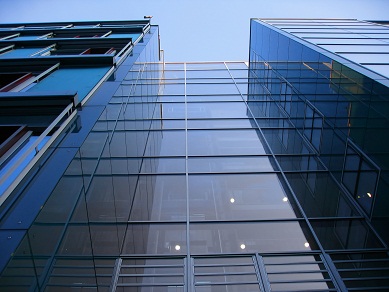If you don’t have a good intern program, you’re screwed: the current state of play of mid-sized businesses in Australia

As the editor of First 5000, the only website dedicated to mid-sized business* in Australia, one of the best parts of my job is getting out and speaking to the people who run these enterprises.
Most people don’t know about mid-sized businesses, or should I say, specifically about mid-sized businesses. Often bundled with small businesses in the ‘SME’ acronym, the importance of mid-sized businesses often gets lost in the SME rhetoric.
The people who run mid-sized businesses have their hands full. They are run by people managing a group of up to 199 staff. They are focussed on continuing to grow their multi-million dollar businesses, developing products, taking care of employees, constantly looking for new people, staying on top of a variety of compliance issues, and looking after stakeholders.
I’ve found the best way to learn about what goes on inside these businesses is to talk to the people who run them.
Here’s what they had to say to me about the issues facing their mid-sized businesses today:
If you don’t have a good intern program, you’re screwed
Forget about hiring good people at graduate level – if you haven’t secured university students as interns, you’re screwed. By the time they graduate, the top students have already secured employment. You’re coming way too late to the party if you expect to hire them at this stage.
Where is all the talent?
“We used to advertise for PR people and get dozens of applicants,” one PR account director said. “Now, we’re lucky to get a handful of applicants. Even employment agencies are coming back to us with just one or two options, and they’re not even good candidates!”
Another PR head echoed those thoughts. “A year ago, we’d advertise for a senior PR person and I’d get so many applicants, I’d divvy them up amongst my team and go through them. I cannot believe I now only get one or two applicants for those same jobs.”
The CEO of one of the world’s largest PR agencies said the tide was turning. “There are lots of PR companies that have transformed into ‘digital content agencies’ and they are drawing people who would have once applied to work at a PR company,” he said, adding his own company had taken on 30 staff this year. “But it’s almost impossible to hire at Account Director level.”
Another CEO said he currently had 25 openings for software engineers. “A year ago, if you weren’t one of the first 50 applicants to reply to a job we advertised, we discarded those resumes; now I get maybe 2 or 3 applications for a job. I celebrate when a CV comes in!”
The trick he says, is acting fast. “I need to shorten the length of time from application to hiring to be inside a week,” he said. “By the time I interview someone, get them in for a second interview, and offer them the job, they’ve already accepted something elsewhere. Our business is at risk of stalling if we cannot find engineers.”
He added the business was looking at 457 visas to bring in qualified engineers from Asia, namely China.
Naturally, this shrinking employee pool means salaries are on the rise in key industries. “In the last three months, the base salary for an engineer has risen from $90K to $120K,” said the CEO. “Within three months, our annual salary bill went from $20 million to $22 million – and that’s just to keep the staff we already have! There are companies out there waving money around. It’s almost impossible to compete with that.”
Have a clear path for progression
“New [young] staff want jobs with titles, they want responsibility, and they want it quickly,” one CEO told me. “They want to move up without having done the time.”
Another CEO told me this attitude wasn’t necessarily a bad thing. “Things move faster these days,” he said. “If someone is capable, we don’t have a problem promoting them quickly.”
What helps, he added, was having a clear path for progression. Show people how they can climb the ladder. Give people the right mentors within the business and they will thrive.
Don’t move or you’re finished
Being in the city is a huge drawcard for employees. But space in the city is limited. And when you run out of space, what do you do?
“We took one floor in our building and filled it,” said the CEO of an almost 200-employee strong company in Sydney. “So we took out another. Now we’re bursting at the seams, and there’s no space left. We looked at St Leonards, North Sydney, Artarmon and a few other places, then conducted a survey with our employees. Sixty per cent said they would leave if we moved out of the city.”
Another Sydney-based CEO is facing the same problem. “Our office is beginning to resemble a third-world call centre,” he said, waving his arm at the neat rows of desks lined up one after the other. “We do have some space we can cannibalise from our ‘living’ areas, but even moving a few walls around is going to set us back close to a million dollars.” And having already moved once in the last two years, he is not so keen to move again so soon. “Besides, we still have a bit of time left on our lease.”
Retain, retain, retain
If you think finding employees is hard enough, you’ll need to try even harder to retain them. People don’t hang around jobs as long as they used to, and some industries, such as PR, have exceptionally high churn.
“We find about 2-3 years is the average time an employee will spend here,” said the head of a mid-sized PR company. “And that’s the average for our industry.”
With so much competition for talent, it’s crucial employees feel recognised and rewarded for their contribution. It’s no longer simply about the dollars – employees want to feel appreciated, have work flexibility, spend time within a great work culture, and have clearly defined opportunities to grow within the organisation.
* First 5000 defines a mid-sized business as one which employs between 20 and 199 people. There are around 42,000 such businesses in Australia, accounting for 25% of Australia’s GDP. The top 5000 of these generate revenue of between $10 and $150 million per year.
Roulla Yiacoumi was the the editor of First 5000, the leading network for mid-sized businesses in Australia from July 2015 to October 2016.






